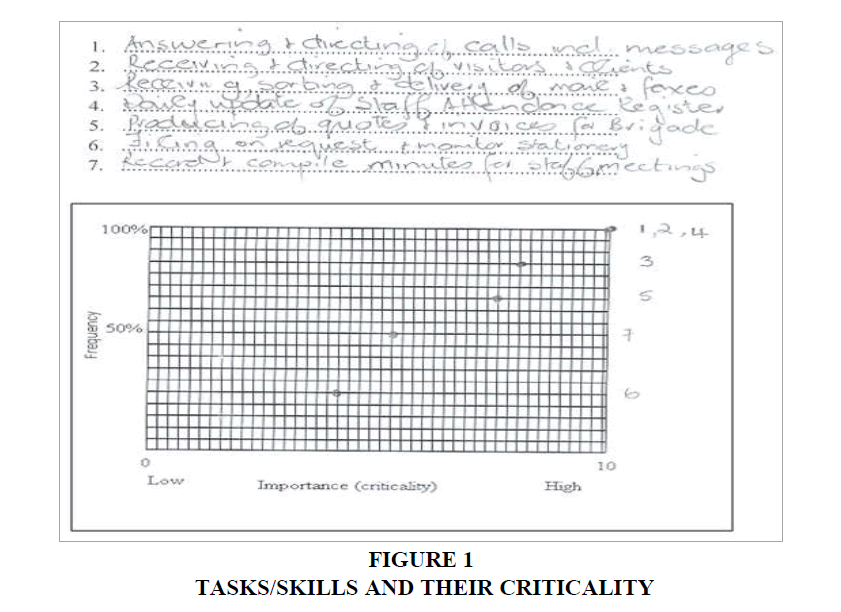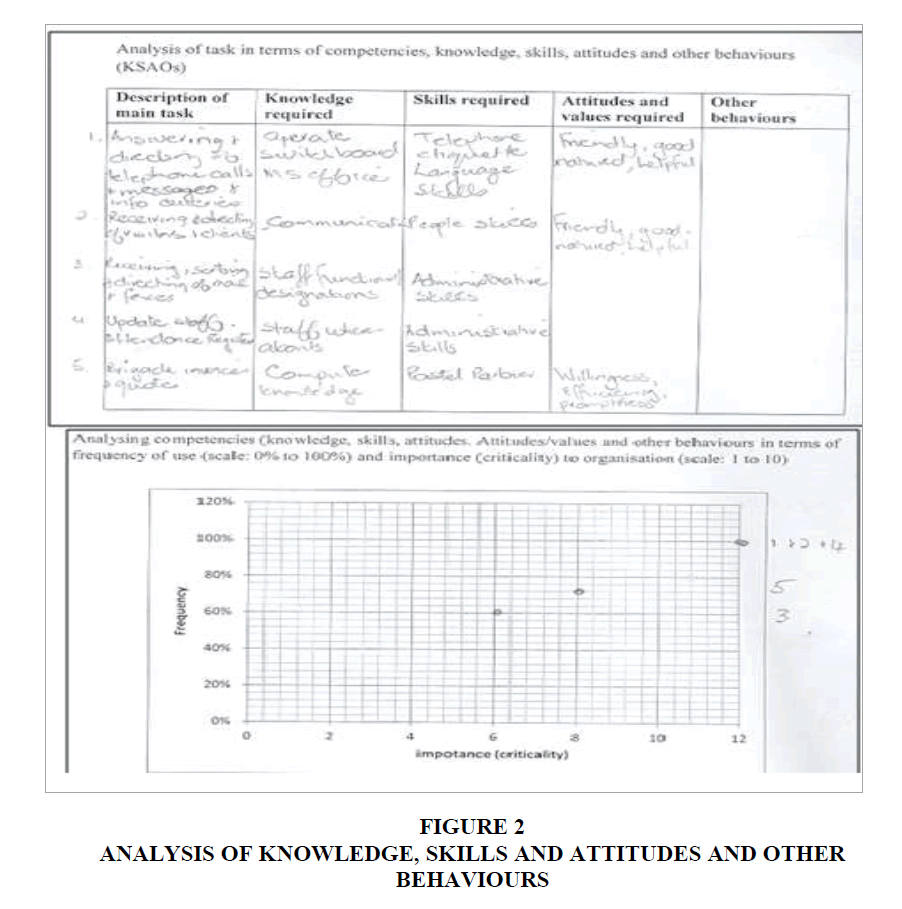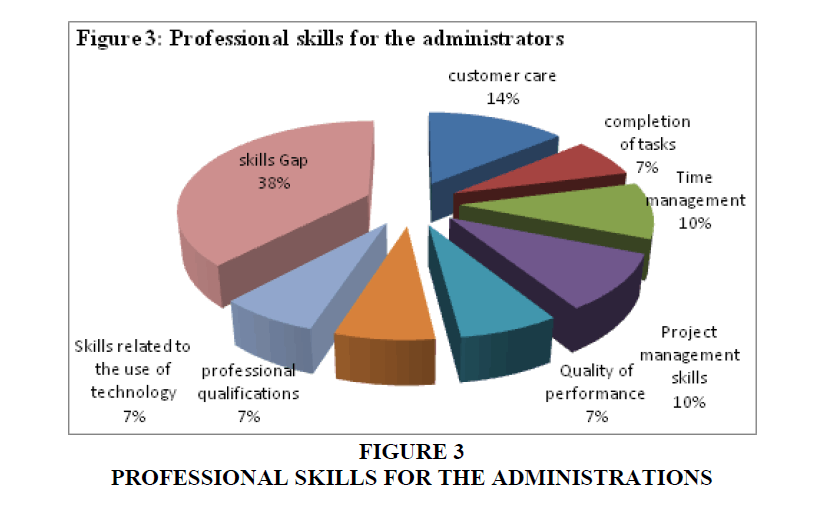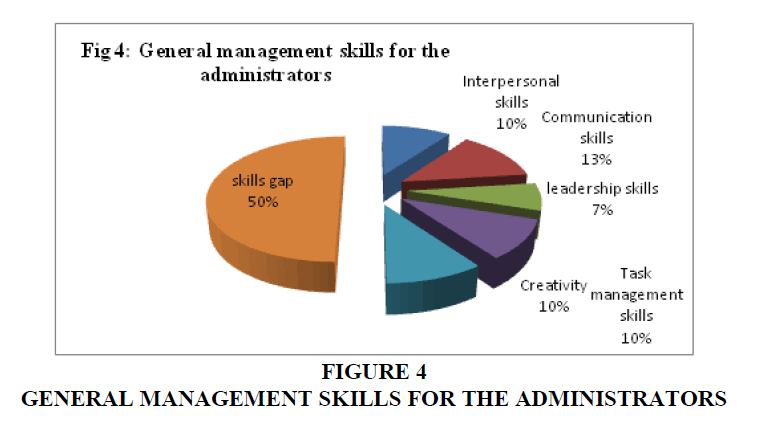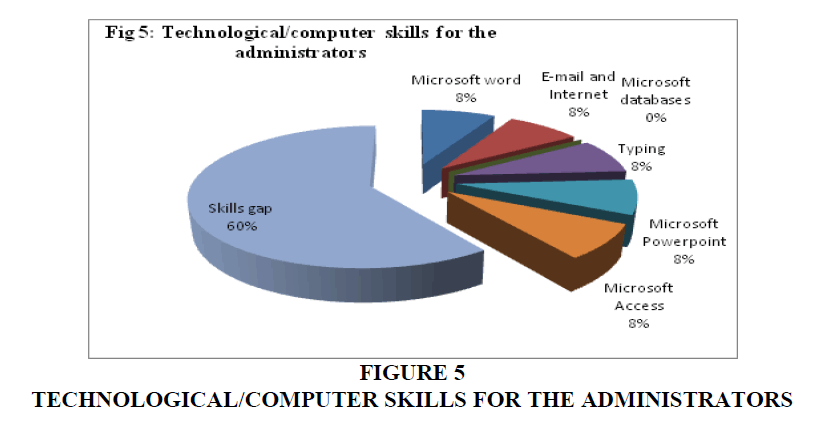Research Article: 2021 Vol: 27 Issue: 2
Industry 4.0 and Skills Deficiencies in the HRM Function Case Study of the HRM Department of A Selected organization in Cape Town
Nteboheng Patricia Mefi, Walter Sisulu University
Samson Nambei Asoba, Walter Sisulu University
Abstract
The study considered the skills deficiencies arising from the transition to industry 4.0. There have been wide observations across the world that the advancements associated with industry 4.0 means that some skills have become obsolete while other skills especially those related to technological use have emerged. Consequently, this paper explored the skills deficiencies of human resource administrators from seven organizations which were chosen following convenience sampling techniques. The restrictions on movement associated with the Covid-19 pandemic has meant that data collection in most social science research be mainly electronic and virtual. As such, electronic data collection methods based on a questionnaire with both qualitative and quantitative items was used to collect data. Evidence collected in this study echoed the literature and was consistent with other researches which had found significant skills deficiencies across several categories of skills including technical, off functional and technological. Following the results of this study, organizations are encouraged to accelerate training needs analysis and subsequent re-skilling to ensure competitiveness.
Keywords
Skills, Industry 4.0, Training, Human Resources.
Introduction
The transition to Industry 4.0 has skills implication for entire organisations and for their Human Resource Management (HRM) departments (Maisiri & Dyk, 2021; Dhanpat et al., 2020). Theoretical work on HRM skills and competencies for the strategic HRM has been focal of the years. The increased automation, digitalisation and technological changes associated with the Fourth Industial revolution (4IR) has increased calls for re-skilling HRM professionals to meet the strategic partner role. Dhanpat et al. (2021) noted that technical, managerial and soft skills will be critical for competitive advantage in Industry 4.0. To Boudreau and Ramstad (2007) HRM is increasing becoming a ‘decision science’ contributing significantly to corporate decision making. For HRM to meet the strategic partner role in industry 4.0, just they are also expected to possess complex skills including providing specific data, measurements, figures and forecasts about HR functions. Lee (2011) argues that one HRM meets the data management collation and management challenge through HR metrics, executive decision is likely to improve to meet adaptability challenges facing organisations today. The information revolution, epitomised by the internet, has made an ocean of information or for business intelligence which amounts to a multitude of alternatives in decision making. An explosion of information to decision makers complicates the ability to sift key components for decision making. In short, the demand for quality decision makers cannot be emphasised strongly enough. As early as 1980, Drucker (1980:69) remarked that managerial decisions to commit today’s economic resources to future uncertainty have become difficulty. From this background, the researcher became determined to study quality of decision making as a key attribute of HR managers.
Literature Review
Fischer’s (1980) skills theory can be used to as a lens to understand the skills problem facing the HRM departments of organisations. In this theory, skills are considered from a cognitive perspective and are believed to develop in hierarchical form (Fischer, 1980). The theory classifies skills into sensory skills, representational skills as well abstract skills. A number of scholars have written aboutr skills acquisition including cognitive, Behavioral and interactionist theories (Taie, 2014). It should be noted that the 4IR is linked to a wide scope of skills that makes it imperative for HRM administrators to broaden their skills base. Technical skills seem to be relevant in the use of technologies while human skills seem to be important in fostering interaction among people from various professions (Siekmann & Fopwler, 2017). The World Economic Forum [WEF] (2019) noted that workplaces and tasks are changing thereby creating skills deficiencies. Skills requirement in Industry 4.0 will include the need to address high digitalisation, unprecedented use of Information Technology (ICT), increased use of electronic platforms and the neeed to facilitate organisational change (Calitz et al., 2015). Malanda and Twinomunzi (2019) provided a number of skills which are important in industry 4.0, including: soft skills, technical skills, problem solving skills, business skills, interpersonal skills, management skills, language skills, strategy skills and programming skills. On the other hand, Fischer’s (1980) skills theory postulated that skills can be classified into sensory-motor skills, representational skills, and abstract skills and these are built through the performance of certain tasks. Botha and Coetze (2007) broadly classified skills into professional competencies and cross functional skills. Whereas professional skills measure employees’ knowledge and skills in relation to technical aspects of the job, cross functional competencies are those nontechnical skills required in their jobs (Botha & Coetze, 2007). This shows that there is no actual standard for classifying skills. The actual skills required depend on the task and nature of the organisation. A task analysis describes the tasks performed by an employee and the knowledge, skills and attitude that are vital to perform the job successfully (Botha & Coetzee, 2007). Skills are at the heart of the performance of people in organisations and the development of South Africa as a country. In fact national challenges and problems are tackled by skilled people at organisational level. Now, the vehicle for up skilling people is training and Development, a process which begins by identifying the skills needs of people, organisations, industry and the country. This phase of identifying training needs holistically is called needs analysis. Argue that needs analysis must be done in a ‘sophisticated and holistic approach’ in order for training and development to be relevant, effective and worth it.
Research Problem and Objectives
The skills required in the world of work today are in transition (Siekmann & Fowler, 2017). There are further observations that there is a skills mismatch between those skills in supply and those in demand (Shaw & Ranjana, 2018: Siekmann & Fowler, 2017). The purpose of this assignment was to practically explore skills gaps and skills deficiencies among HRM administrators at a selected organisation from the Health and Wellfare Sector in Cape Town.
Methodology
The multiple case study research method was used owing to the limitations to movement arising from the Covid-19 pandemic. Consequently, the selection of the eight (8) case organisations from which participants were found was based on the convenience sampling technique Grundke et al. (2018). All data was electronically collected due to safety requirements to avoid the spread of the coronavirus. An email was sent out to the managers of ten (10) organisations in the researcher’s neighbour. The email was a request to seek human resources administrators who were interested to participate in study. The manager later responded and those who indicated interest to participate in the study were as shown in Table 1.
The method of data collection was both qualitative and quantitative, the first part of the questionnaire involved a task analysis of the ten (10) HR administrators which was conducted to collect data on the nature of the tasks that they have been doing over the years as well as to analyse the knowledge, competencies and skills required for effective performance of the tasks. Job/task analysis is the examination of what employees must do to perform their jobs properly. A job analysis describes the tasks performed by an employee and the knowledge, skills and attitude that are vital to perform the job successfully (Botha & Coetzee, 2007). Task analysis was conducted on the ten administrators following the task analysis instrument in (Botha & Coetzee, 2007). In the second part of the research instrument, skills gaps (deficiencies) were considered.
Findings and Discussion
Figure 1 below shows the main tasks which the HR administrators indicated that they had performed over the years.
The analysis shows that communication, collation of employee related statistics and engagements with clients were the most critical tasks/skills among the HR administrators who participated in the study. Figure 2 is an extract of the details provided by the HR administrators to indicate some of the most important knowledge, skills, attitudes, values and other behaviours required to execute the main tasks mentioned. As can be seen, the HR administrators indicated that friendliness, helpfulness, being good nurtured and promptness are some of the applied interpersonal competencies that they applied to their work. Foundational competencies such as Microsoft word, knowledge of the operation of a switchboard and general computer skills were also mentioned as important.
In terms of frequency and criticality, the HR administrators, as shown above, indicated that being friendly, operating the switch board and being good nurtured are some of the high critical competencies of their job. Administrative skills, people and communication skills have also been ranked as high in criticality and importance. Re-skilling interventions should prioritise such competencies. The competences and skills assessed were grouped into two broad categories, that is, professional competencies and cross functional competencies. The cross functional competencies were further classified as general management competencies and computer skills. Whereas professional competencies are those that measure employees’ knowledge and skills in relation to technical aspects of the job, cross functional competencies are those non-technical skills required in their jobs (Botha and Coetze, 2007). The analysis was done as shown in Table 2.
The results from the analysis of skills deficiencies related to the professional skills are shown in Figure 3.
Figure 3 indicate a skills deficiency of thirty eight percent (38%) among the respondents. This was consisten with observations made in the literature review. There appear to be a significant need for professional skills (Caple & Buckely, 2000). This seems to suggest that despite the 4IR having introduced new technical realities (Maisiri & van dyk, 2021) required for successful business, it has also made notable realignment of of the professional competencies required in the business world. The results with report to general management skills is shown in Figure 4 shows the reponses related to general management skills of the administrators (Bahri, 2016).
As shown in Figure 4, the HR administrators had notable skills deficiencies related to general management. Indeed, as observed in the literature, the 4IR has led to changes on the competencies required for effective performance in organisations. The skills gap of fifty percent (50%) showed that the HR administrators felt that their present competencies were not enough to meet their workplace demands. Figure 5 shows the responses related to technological skills of the respondents.
As shown in Figure 5, the skills deficiency related to technological use was significant (60%). This is consistent with literature comments an extrapolations that there is notable lack of technological skills due to the changes arising from the 4IR (WEF, 2019). There is significant need to address these gaps given the echoes that competitive advantage for the future will be based on technological use (Shamim et al., 2016)
Conclusion
This study has found evidence that the HRM administrators who participated in this study had notable skills gaps which need to be addressed to ensure that they can continue to meet their job descriptions. The evidence established from this study suggest that the skills deficiency among HRM administrators is wide and broad, ranging from both interpersonal;, professional. In particular, the HRM administrators who were interacted with significantly lack computer and technological skills which is an issue of major concern given the 4IR. The study also shows that the skills deficiencies arising from the 4IR are not only technical but they span broadly across professional and cross-functional skills. These results vindicate the literature observations that industry 4.0 has made some traditional skills redundant while introducing some new skills.
Acknowledgement
Following the results of this study and the conclusions that have been reached, it is recommended that organizations should prioritize human resources development initiatives. Such strategies for re-skilling employees such as training and development are recommended. Furthermore, talent acquisition and retention initiatives should take into consideration the skills question and ensure that organizations have the right talent. Organizations are recommended to conduct organizational-wide skills analysis to identify specific skills deficiencies in their organizations and then promote learning, training and development.
References
- Bahri, S. (2016). Factors Affecting the Quality of Accounting Imlilementation in Women's Coolieratives in the District of liamekasan City, liamekasan Regency.&nbsli;Scientific Journal of Asian Business and Economics, 10(2), 49-56.
- Botha, J.A., &amli; Coetzee, M.E.L.I.N.D.E. (2007). The lisychology of learning. Coetzee, M. with Kiley, J. and Truman, K.(Eds.) liractising Education, Training and Develoliment in South African Organisations. Calie Town, SA: Juta &amli; Comliany Ltd, 46-75.
- Calitz, A.li., Cullen, M.D.M., &amli; Greyling, J.H. (2015). South African Alumni liercelitions of the Industry ICT Skills Requirements. In: liroceedings of the 44th Annual Conference of the Southern African Comliuter Lecturers' Association, 3(1), 36– 48.
- Calile, J., &amli; Buckely, R. (2000). The theory and liractice of training. 4th ed. Kogan books
- Dhanliat, N., Buthelezi, Z.li., Joe, M.R., Malihela, T.V., &amli; Shongwe, N. (2020). Industry 4.0: The role of human resource lirofessionals. SA Journal of Human Resource Management/SA Tydskrif vir Menslikehullibronbestuur, 18(0), a1302.
- Fischer, K.W. (1980). A Theory of Cognitive Develoliment: The Control and Construction of Hierarchies of Skills. lisychological Review, 87(6), 477-531.
- Grundke, R., Marcolin, L., &amli; Squicciarin. (2018). Which skills for the digital era? Returns to skills analysis.OECD Science, Technology andIndustry Working lialiers, OECD liublishing, liaris.
- Maisiri, W., &amli; Van Dyk, L. (2021). Industry 4.0 skills: A liersliective of the South African manufacturing industry. SA Journal of Human Resource Management/SA Tydskrif vir Menslikehullibronbestuur, 19(0), a1416.
- Malanda, D., &amli; Twinomunzi, H. (2019). Digital skills in the liublic sector: A systematic literature review. In Twinomurinzi, H., Mawela, T., Msweri, N. &amli; lihukubje, li. 2019. liroceedings of the Digital Innovation and Transformation Conference: Digital Skills 2019, Shifting the digital skills discourse for the 4th industrial revolution. Johannesburg: National Electronic Media Institue of South Africa and University of South Africa.
- Shamim, S., Cang, S., Yu, H., &amli; Li, Y. (2016).&nbsli; Management Aliliroaches for Industry 4.0:A human resource management liersliective. Journal of Engineering in Medicine and Biology, 5309-5316.
- Siekmann, G., &amli; Fowler, C. (2017). Identifying work skills: international aliliroaches. National Centre for Vocational Education Research.
- Shaw, li., &amli; Ranjana, R.M. (2018). Industry 4.0 and Future of HR, Journal of Management, 5(6), 96-103.
